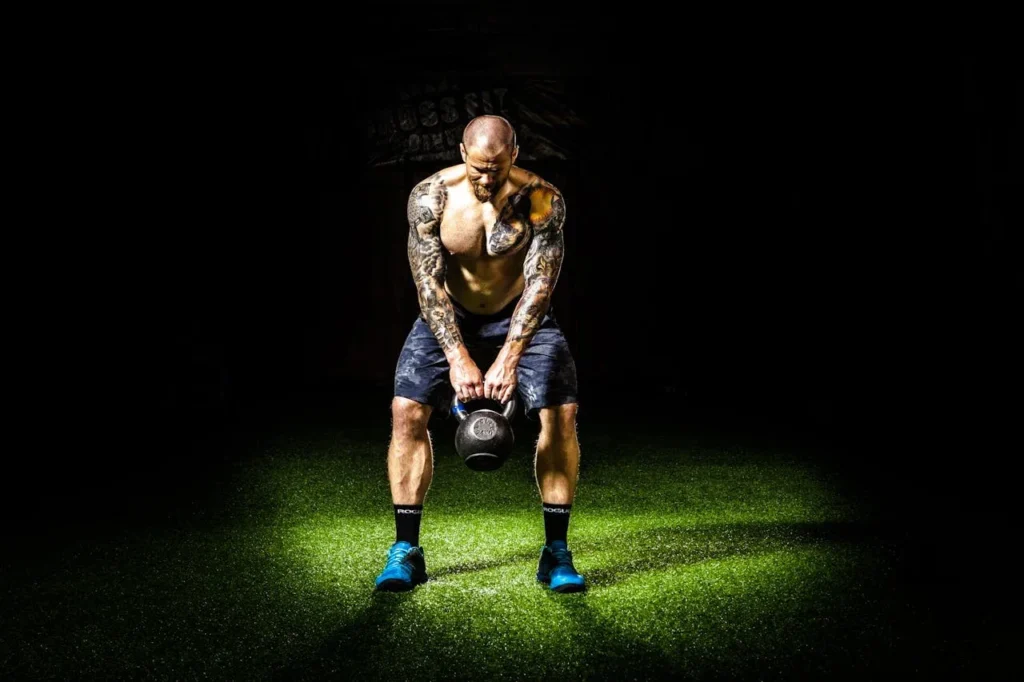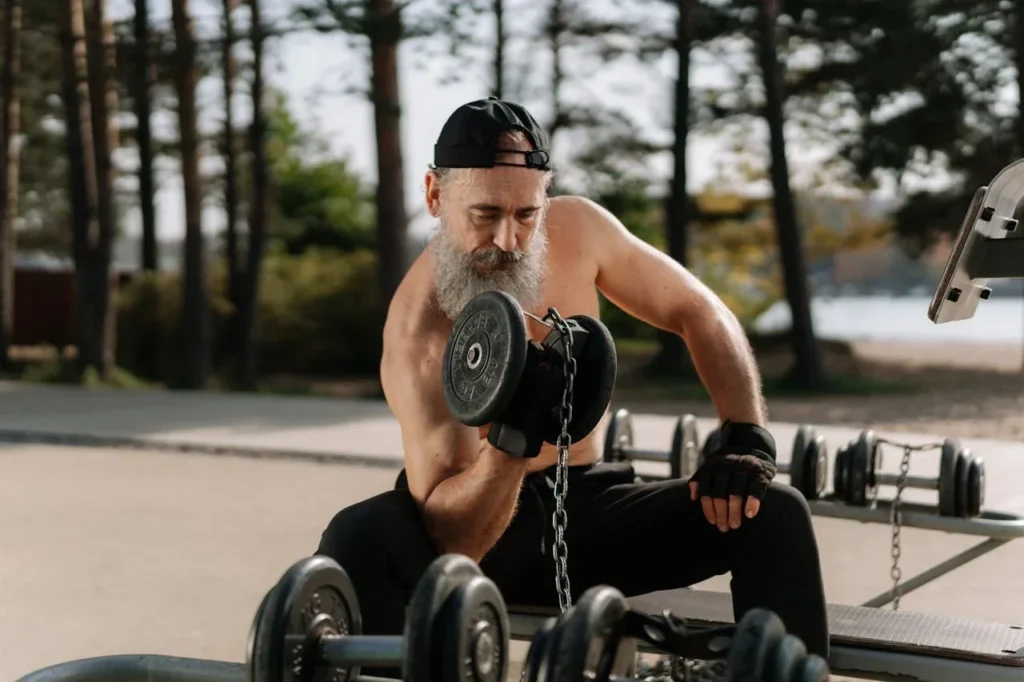Last Updated on October 6, 2025 by shawnshealth
Discover the key differences between strength training and functional training. Learn about their unique benefits, exercises, and how to choose the best workout routine for your fitness goals.
Introduction to Strength Training and Functional Training
In the fitness world, two popular training methods often come into discussion: strength training and functional training. While both offer unique benefits, they cater to different fitness goals and needs. Understanding the differences can help you choose the best workout routine for your objectives.
🧠 Want to see functional strength in action? These functional strength for daily life exercises show how movement-based training builds real-world power—especially for aging strong.
🏋️♂️ Key Differences Between Strength Training and Functional Training
- Strength Training builds raw muscle power and size using heavy resistance.
- Functional Training improves movement patterns used in daily life.
- Strength training focuses on specific muscles; functional training focuses on whole-body coordination.
- Functional exercises often mimic real-world motions; strength exercises target performance gains.
🛠️ What Is Strength Training?
- A form of resistance training focused on building muscular strength and hypertrophy.
- Uses equipment like barbells, dumbbells, machines, or bodyweight.
- Common movements: squats, deadlifts, bench press, overhead press.
- Typically done in sets and reps with progressive overload.
🔄 What Is Functional Training?
- A training style that improves the body’s ability to perform natural, real-life movements.
- Includes multi-joint, multi-plane exercises like lunges, kettlebell swings, and rotational drills.
- Focuses on balance, coordination, and joint stability.
- Often used in rehab, sports training, and overall fitness programs.
🆚 Strength Training vs Functional Training: Which Should You Choose?
- Choose Strength Training if: you want to build muscle, increase max strength, or improve physique.
- Choose Functional Training if: your goal is better balance, coordination, or injury prevention.
- Best results come from blending both based on your goals and fitness level.
🔄 Functional fitness isn’t just trending—it’s transforming how we train. See what’s driving the movement in this 2025 Fitness Trend Spotlight on Functional Fitness.
🛒 Looking to upgrade your gear for strength or functional training? Explore Amazon’s selection of home fitness equipment
to find tools that support your goals—whether you’re lifting heavy or training for real-world movement.
⚠️ As an Amazon Associate, I earn from qualifying purchases.
Table of Contents
Medical Disclaimer: This content is for informational purposes only. Consult a healthcare professional before making any health or fitness changes.
Amazon Affiliate Disclaimer: As an Amazon Associate, I earn from qualifying purchases.
Author’s Note:
So, my wife and I were at a dentist office when the bouncer walked in. I thought how strange it was that a dentist office would need a bouncer but obviously that’s what this guy had to be since I’d never seen a dentist built like this guy. Turns out, he was the dentist!
We started talking. He said he works out regularly at a local gym but had recently hurt his back. He explained he’d hurt it shoveling snow. He told me he deadlifts (probably a ton by the looks of him) so he didn’t understand why he’d hurt himself on a shovel full of snow.
Me being me, spreading love, encouragement, and good cheer everywhere I go, asked him if he knew what the best exercise is for snow shoveling. He assumed deadlifts, squats, bicep curls, etc. I said, “No. The best exercise for shoveling snow is shoveling snow.” This is obviously not to say that he’s wasting his time in the gym but to point out that often a movement has its own specificity, its own action that we don’t normally train for in the gym.
He thought I was being Mr. Smarty Pants but then I explained that being strong is one of the greatest things you can do for your body, however, when we deadlift, we get good at deadlifting, when we do bicep curls, we get good at bicep curls, when we shovel snow, we get good at shoveling snow.
This is one of those subjects that you could actually dedicate a lot of time looking into the differences/similarities of strength and functional training. In reality, this might be more along the lines of nit-picking. Strength never hurts anything. The more you have the better.
Do you get strong by hitting the machines at local 24-hour fitness, do you hoist the free weights in the hardcore gym down the street (or your garage), or are you doing some amazing calisthenics? Doesn’t matter, just do it, but there is a difference in that we get good at what we train.
💪 Want to see how real-world grit translates into functional power? Dive into Farmer Strength—a deep look at the kind of strength that moves mountains (and hay bales).
Strength Training and Functional Training
🎥 Most of us know what strength training is—but what about functional training? Let’s break down how it works, why it matters, and how it can help you move better in real life.
What is Strength Training?
Strength training focuses on increasing muscle mass and strength. This type of training involves lifting weights and using resistance machines to target specific muscle groups. Common exercises include:
- Squats
- Deadlifts
- Bench Press
- Bicep Curls
Key Benefits of Strength Training:
- Muscle Growth: Promotes hypertrophy, leading to increased muscle size and strength.
- Bone Density: Improves bone health by increasing bone density.
- Metabolism Boost: Increases resting metabolic rate, helping with weight management.

What is Functional Training?
Functional training aims to enhance the body’s ability to perform everyday activities. This training focuses on improving balance, coordination, and movement patterns through exercises that mimic real-life movements. Examples include:
- Kettlebell Swings
- Medicine Ball Throws
- Bodyweight Squats
- Lunges
Key Benefits of Functional Training:
- Improved Mobility: Enhances range of motion and flexibility.
- Injury Prevention: Strengthens muscles used in daily activities, reducing the risk of injury.
- Enhanced Balance and Coordination: Focuses on stabilizing muscles, improving overall body stability.
🧠 Curious how strength translates into real-world movement? Check out this guide on Functional Strength Training from VeryWell Health—it breaks down how exercises like squats, rows, and lunges build the kind of power that actually shows up in daily life.

Key Differences Between Strength Training and Functional Training
1. Focus and Goals:
- Strength Training: Primarily targets muscle growth and strength.
- Functional Training: Aims to improve overall functional movements and daily activity performance.
2. Exercise Types:
- Strength Training: Utilizes isolated movements with weights and machines.
- Functional Training: Incorporates compound, multi-joint movements that simulate real-life actions.
3. Equipment:
- Strength Training: Dumbbells, barbells, resistance machines.
- Functional Training: Kettlebells, medicine balls, bodyweight, resistance bands.
How to Choose Between Strength Training and Functional Training

Choosing the right training method depends on your fitness goals. If you’re looking to build muscle mass and increase strength, strength training is ideal. However, if your goal is to improve overall body function, balance, and coordination, functional training might be the better choice.
🏋️♂️ Ready to train for resilience, not just reps? Explore these functional fitness moves for tough times—they’re built to help you thrive when life throws real challenges your way.
Factors to Consider
1. Your Fitness Goals:
- Strength Training: If your primary goal is to build muscle size, increase strength, and improve bone density, strength training is the way to go. It’s particularly beneficial for those looking to enhance their physique and overall muscle definition.
- Functional Training: If your aim is to improve daily functional movements, enhance flexibility, and prevent injuries, functional training is more suitable. It’s ideal for those who want to enhance their overall body functionality and movement efficiency.
2. Time and Equipment Availability:
- Strength Training: Typically requires access to a gym with a variety of weights and resistance machines. If you have a home gym, you’ll need to invest in dumbbells, barbells, and possibly a squat rack.
- Functional Training: Can be done with minimal equipment and often requires just your body weight. Exercises can be performed at home, in a park, or any open space, making it more accessible for those without a gym membership.
3. Enjoyment and Sustainability:
- Strength Training: Some people find lifting weights and seeing progressive strength gains highly motivating. If you enjoy structured routines and measurable progress, strength training might be more enjoyable and sustainable for you.
- Functional Training: Others may prefer the dynamic and varied nature of functional training. If you like exercises that mimic real-life movements and enjoy changing up your routine frequently, functional training can keep you engaged and motivated.
🆚 Curious how functional training stacks up against traditional strength work? Check out this article on the difference between functional and traditional training—it breaks down the goals, movements, and benefits of each so you can train smarter, not just harder.
❌ Common Mistakes When Choosing Between Strength and Functional Training
- Assuming one method fits all goals—each has unique benefits.
- Neglecting mobility and balance in strength-focused routines.
- Overtraining isolated muscles without movement context.
- Skipping progression tracking in functional workouts.
- Choosing based on trends instead of personal needs and limitations.
📌 Key Takeaways
- Strength training builds raw power and muscle mass through resistance.
- Functional training improves balance, coordination, and real-life movement.
- Each method serves different goals—blending both often yields the best results.
- Choose based on your lifestyle, equipment access, and long-term fitness needs.

Conclusion
Both strength training and functional training offer unique benefits and can be incorporated into your fitness routine. Understanding their differences can help you tailor your workouts to meet your specific goals. Whether you’re aiming for muscle growth or improved daily functionality, incorporating elements of both can lead to a balanced and effective fitness program. Ultimately, the best choice depends on your personal fitness goals, equipment availability, and what you enjoy most. By combining the strengths of both training methods, you can achieve a comprehensive approach to fitness that enhances your overall health and well-being.
🔥 Gear to Help You Achieve Your Health and Fitness Goals 💪
If you’re looking for tools to enhance your fitness journey, check out this. Explore top-rated fitness gear on Amazon to enhance your workouts. Check out the latest picks here! 🛒 to support your workouts and progress.
🚀 Find equipment designed to boost strength, endurance, and overall performance!
⚠️ Short disclaimer: As an Amazon Associate, I earn from qualifying purchases.
🧠 Want to go deeper?
Explore our most trusted guides to build strength, mobility, and real-world resilience:
- Senior Fitness: Safe, Effective Routines for Aging Strong
- Unlock Farmer Strength: Real-World Power Without the Gym
- Ultimate Guide to Calisthenics: Train Anywhere, Progress Everywhere
💬 FAQ: Strength Training vs. Functional Training
1. What is the main difference between strength training and functional training?
- Strength training focuses on building muscle and increasing raw strength.
- Functional training improves everyday movement patterns and overall mobility.
2. Which is better for beginners?
- Functional training is usually more beginner-friendly.
- It emphasizes movement quality and body control.
- Strength training can also be safe with proper guidance and form.
3. Can I combine both in one workout?
- Yes, combining both is effective and common.
- Use strength training for building muscle and functional exercises for movement and injury prevention.
- Example: Pair squats (strength) with balance drills (functional).
4. Does functional training build muscle too?
- To a degree, yes.
- It builds lean muscle, endurance, and coordination.
- It’s less focused on hypertrophy than traditional strength training.
5. Is strength training only for athletes or bodybuilders?
- No, it’s for everyone.
- Strength training improves bone density, posture, and daily performance.
- It supports longevity and physical independence.
6. Will functional training help me lose weight?
- Yes, it burns calories and improves metabolism.
- Often includes compound, full-body movements.
- Works well when combined with a healthy diet.
7. Which method is better for older adults?
- Functional training is ideal for improving balance, coordination, and joint stability.
- Light strength training can be safely included for added muscle support.
8. How often should I do each type of training?
- Strength training: 2–4 times per week depending on goals.
- Functional training: Can be done 2–3 times weekly or integrated as warm-ups or cool-downs.
I have said these things to you, that in me you may have peace. In the world you will have tribulation. But take heart, I have overcome the world. – John 16:33




